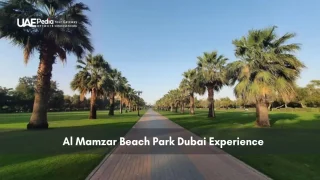What if the UAE’s modern skyline wasn’t its first architectural marvel? Nestled in the heart of the capital, a 230-year-old sentinel stands as proof of the region’s layered past. This isn’t just another heritage site—it’s where desert sands whisper tales of resilience, diplomacy, and transformation.
Originally built as a coastal watchtower in the 1790s, the structure evolved into a fortified seat of governance. Its limestone walls now house a meticulously curated national archive, blending artifacts with interactive exhibits. Think handwritten treaties beside touchscreens—history meets innovation.
Conservation teams spent years restoring weathered coral stones and traditional palm-frond roofs. Today, visitors explore original chambers alongside modern galleries that dissect the city’s growth. Don’t miss the inner fort’s ceremonial courtyard—it’s where tribal leaders once gathered under starlit skies.
This landmark anchors Abu Dhabi’s cultural identity while bridging eras. It’s part of the UAE’s network of historic forts, yet stands apart through its dual role as memorial and living museum. Morning light bathes its facade in golden hues, perfect for photography enthusiasts.
Key Takeaways:
- Oldest stone structure in the capital, transformed into a 21st-century cultural hub
- Houses rare documents and artifacts tracing tribal alliances to oil-era diplomacy
- Architectural fusion: 18th-century watchtower meets contemporary exhibition spaces
- Ongoing preservation work ensures authenticity for future generations
Discovering Abu Dhabi’s Rich Historical Legacy
Imagine standing where desert guardians once scanned horizons for pearl divers and trading ships. This fortress began as a solitary watchtower in 1790—crushed coral and sea stones stacked to protect a fledgling community. Within decades, it grew into a political heartbeat where leaders like Sheikh Shakhbut bin Sultan Nahyan shaped alliances under its palm-wood ceilings.
From Defense to Diplomacy
Walls tell stories here. The inner fort served dual roles: royal residence for the ruling family and strategic command center. By the 20th century, it hosted the National Consultative Council—early debates echoing through rooms now filled with archival treasures. Picture hand-penned letters beside tribal seals, all displayed where decisions once altered the region’s course.
Stone to Storytelling
Restoration teams uncovered hidden layers—original plasterwork, centuries-old hinges. Today, visitors trace three eras:
| Period | Role | Key Feature |
|---|---|---|
| 1790s-1940s | Coastal Defense | Watchtower & Armory |
| 1950s-1960s | Royal Residence | Family Majlis Chambers |
| 1970s-Present | Cultural Archive | Interactive History Galleries |
That ceremonial courtyard? It’s unchanged since Sheikh Shakhbut greeted tribal elders there. Now, it hosts heritage festivals where traditional dances meet augmented reality tours. Talk about time travel!
Experiencing abu dhabi qasr al hosn: Cultural Heritage & Craftsmanship
Ever touched fabric woven by Bedouin hands? At this historic site’s artisan quarter, you’ll find living threads connecting past and present. The House of Artisans pulses with energy—master weavers demonstrate Sadu techniques while potters shape clay using methods unchanged for centuries.
Guardians of Tradition
This cultural hub safeguards skills like palm-frond braiding and henna design through its Crafting Foundation Programme. “We’re not just preserving objects,” explains a third-generation weaver, “but the stories in every stitch.” Visitors can join 90-minute workshops to create their own traditional Emirati crafts, from silver jewelry to aromatic bait al gahwa (coffee pots).
Where Hands Teach History
Thursday mornings buzz with families learning embroidery patterns once used on wedding attire. Seasonal events like “The Journey: A Sadu Experience” transform the courtyard into an open-air studio. Pro tip: Arrive early to snag spots in gold-leaf calligraphy sessions—they fill faster than falcons dive!
“My grandmother’s fingers danced with thread; now my students’ phones capture each step. Different tools, same passion.”
From May to September, night markets showcase contemporary twists on heritage crafts. Think camel wool scarves dyed with AI-generated patterns or 3D-printed incense burners. It’s proof that tradition isn’t frozen—it’s a river fed by new streams.
Understanding the Architectural Evolution and Restoration
What if stones could talk? The landmark’s layers reveal three centuries of design thinking. Step through centuries as you move from the 18th-century watchtower—once guarding pearl divers and fishing boats—to the 1940s palace where rulers hosted coastal trade negotiations.
Whispers in the Walls
The original watchtower stands like a time capsule. Built with coral blocks and palm wood, its narrow windows framed views of incoming dhows. The 1939 outer palace added ornate gypsum carvings and shaded courtyards—a stark contrast to the fort’s military roots.
Conservation teams faced puzzles. “We found 19th-century plaster recipes in diaries,” says a restoration architect. “Mixing them with modern stabilizers let us repair walls without losing authenticity.” Original palm-frond ceilings now hide climate-control systems, blending old craft with new comforts.
Stitching Time Together
Modern interventions respect the past. Glass walkways float above original floors, while augmented reality tablets decode hidden details. Spot the watchtower’s ancient mortar—local seashells crushed into lime paste—still visible beneath protective coatings.
This work bridges eras. Traditional wind towers cool galleries displaying 3D-printed models of the city’s skyline. It’s a dialogue: how 1795’s defensive genius informs today’s sustainable buildings. Every corner whispers, “Progress needs roots.”
Engaging with Dynamic Cultural Experiences and Events
Ever wondered where history dances with today’s beat? This landmark thrums with energy year-round through festivals that fuse ancient traditions with modern creativity. From drum circles under starry skies to pop-up markets smelling of saffron and cardamom, every visit sparks new connections.
Seasonal Festivals and Live Performances
The annual Qasr Al Hosn Festival transforms the grounds into a living storybook. Watch poets duel in Nabati verse while kids try their hand at palm-frond weaving. Tickets start at AED 30 for evening concerts featuring both oud masters and indie fusion bands. Pro tip: Grab an Abu Dhabi Pass for 20% off multiple attractions.
| Event Type | Features | Best Time |
|---|---|---|
| Heritage Festival | Live falconry demos, camel wool spinning | November-February |
| Artisan Workshops | Create your own bait al gahwa coffee set | Year-round |
| Moonlight Tours | Guided walks with augmented reality features | October-April |
Interactive Tours and Heritage Programs
Thursdays belong to the House of Artisans. Join free sadu weaving sessions or sign up for silver-smithing workshops (AED 120). Families love the “Time Traveler” scavenger hunt—solve riddles to unlock hidden stories in the fort’s walls.
Check the website weekly. Last month’s surprise pop-up? A coffee-tasting tour tracing Bedouin trade routes. Local baristas served gahwa in 3D-printed cups shaped like ancient vessels. That’s the magic here—every corner whispers, “Touch, taste, try!”
Insider tip: Book tickets online for weekend workshops—they sell out faster than sunset desert tours. General entry remains free, but special events require passes. Come early on Fridays for the liveliest atmosphere!
Reflecting on a Timeless Journey Through Culture
Have you ever walked through a building that’s witnessed two centuries of transformation? This historic landmark began as a watchtower guarding coastal waters, evolved into a home for the ruling family, and now thrives as a living museum. Its walls—once silent witnesses to tribal councils—today hum with stories shared through touchscreens and artisan workshops.
Conservation work here isn’t just about preserving stones. Teams blend ancient plaster recipes with climate-tech to protect original features while hosting modern exhibits. The result? A space where handwritten letters from Sheikh Shakhbut bin Sultan Nahyan sit alongside 3D-printed models of the city’s skyline.
What makes this place pulse with life? Community. Families weave palm fronds where leaders once debated. Night markets fuse saffron-scented traditions with AI-designed crafts. Every corner invites you to touch history—literally.
Ready to walk through time? Step into its story, where heritage isn’t locked in glass cases but lived through hands-on tours and moonlit festivals. This isn’t just a memorial—it’s a conversation between eras, waiting for your voice to join.
Head straight to the House of Artisans, where master crafters demonstrate sadu weaving, palm frond braiding, and Arabic calligraphy. You can even join free workshops—just check the Cultural Foundation’s calendar for dates. Don’t miss Bait Gahwa for a cardamom-spiced coffee break!
The restored inner fort reveals the ruling family’s original living quarters, complete with historical photos and artifacts. Look for the watchtower—it’s where Sheikh Shakhbut once surveyed the coastline. The National Archive onsite also displays early 20th-century treaties and documents he oversaw.
Absolutely! Free 45-minute tours (offered daily) unpack how the structure evolved from a 1760s coral-stone watchtower to a ceremonial palace. Guides highlight conservation techniques used during its 11-year restoration, like stabilizing mudbrick walls with modern materials that “breathe” like traditional ones.
Yes! The annual Qasr Al Hosn Festival transforms the grounds with live falconry demos, pearl diving reenactments, and Emirati storytelling. Year-round, the Cultural Foundation hosts poetry nights, film screenings, and pop-up markets. Pro tip: Evening visits let you see the fort dramatically lit against the city skyline.
This 1968 modernist structure—once the UAE’s first federal council meeting space—now houses exhibits on the nation’s political evolution. It’s a short walk from the fort and included in your ticket. Fun fact: The circular design symbolizes unity, echoing the communal ethos of a traditional majlis.
Totally! Interactive zones let little ones try henna art, build mini forts, or solve heritage-themed puzzles. On weekends, puppet shows reenact tales of Bedouin traders. Stroller access is easy, and shaded courtyards offer respite from the heat. Bonus: Entry is free for under-18s!



















